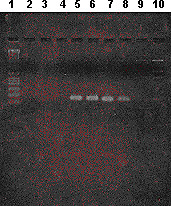This review shows the structure, mode of action, and actual epidemiological data about EAST1 toxin. It is a particularly intriguing bacterial toxin that may subvert multiple cellular processes to yield intestinal epithelial cell secretion. EAST1 toxin was first described in strains of EAggEC that were associated with persistent diarrhea primarily in developing world countries. Molecular organization, mobility, and data in literature are suggesting that EAST1 could be a transposon. The insertion sequences in Escherichia coli and some of the usual transposition mechanisms as well as regulation are reviewed. This review emphasizes the presence of the gene astA in EPEC, EAggEC, A-EPEC, ETEC, DAEC, EIEC, and in non-diarrheagenic E. coli. It also discusses here the presence of the astA gene in Salmonella spp. and future perspectives for understanding its role in diarrheal disease in both bacterial genera.
EAST1 toxin; astA gene; virulence in Escherichia coli; virulence in Salmonella spp




